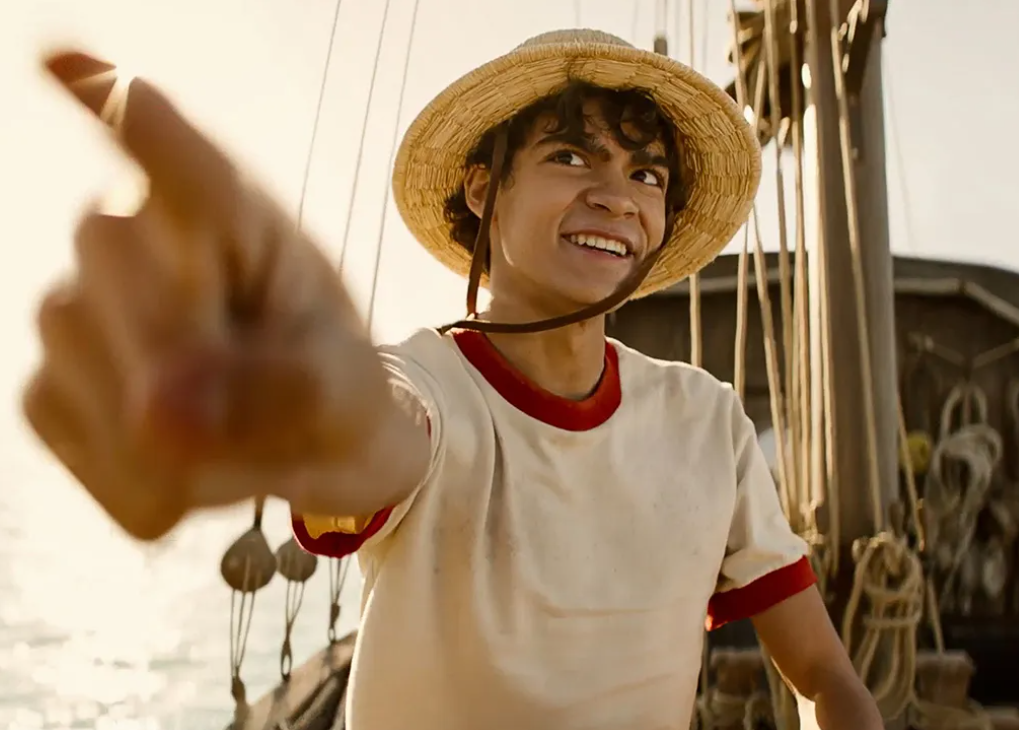
Live-Action.
As a school of adaptation, the live-action take on anime and manga is only slightly less cursed than the live-action series or film based on a video game. Yet remarkably, 2023 is set to be a banner year for both. In January, HBO premiered “The Last of Us,” the hit drama that takes the same somber, character-driven approach to a zombie apocalypse as the 2013 game. With rave reviews, major ratings and a raft of Emmy nominations, “The Last of Us” successfully bucked a multi-decade trend. A few months later, “The Super Mario Bros.” movie would repeat the feat at the box office, if not quite with critics.
Netflix may have eyed this trend with some interest as the global streaming service has prepared the launch of “One Piece,” a series adapted from the long-running manga written and illustrated by Eiichiro Oda. Similar undertakings have a checkered history, a fact Netflix itself knows well; in addition to notorious flops from outside studios like “Ghost in the Shell,” starring Scarlett Johansson, and “Dragonball Evolution,

” Netflix has bankrolled projects from the widely panned “Death Note” to the swiftly canceled “Cowboy Bebop.” With its deep pockets and worldwide reach, Netflix is ideally positioned to reposition a cultural export like “One Piece” for a new and far-flung audience — but from firsthand experience, it’s aware of how intensely possessive fans, wary stakeholders and the ineffable qualities of animation can make for a challenging ordeal. At least “The Last of Us” now offers a best-case scenario to look toward.
To that end, Netflix has come prepared. Oda has given his public blessing to the season, which co-showrunners Matt Owens and Steven Maeda developed into eight hour-long episodes from the first 100 chapters of the manga; subscribers can either prepare or postgame with 15 seasons of the “One Piece”
anime already available to stream, capitalizing on the euphoric enthusiasm for the show and the cast at this summer’s Tudum fan event. “One Piece” seems all but guaranteed to be a commercial success, and to placate loyalists whose guiding light is fidelity to the source. But while this “One Piece” is effective as both an homage and a primer for newcomers, it’s still trapped by its futile effort to painstakingly recreate a world designed for two dimensions.
“One Piece” is a nautical fantasy that pits pirate crews on the hunt for a mythical treasure (hidden somewhere in — you guessed it — one piece) against marines who work to preserve law and order. Teenager Monkey D. Luffy (Iñaki Godoy) dreams of becoming King of the Pirates, and over the course of the season, he secures a ship and assembles a crew with dreams of their own.
Swordsman Roronoa Zoro (Mackenyu) wants to become the greatest blade fighter in the world; thief Nami (Emily Rudd) wants to map the globe; chef Sanji (Taz Skyler) wants to find a legendary source of novel ingredients; and upbeat Usopp (Jacob Romero Gibson) mostly wants to impress his crush. Luffy, as he’s known, aims to be a different kind of pirate who encourages those around him to achieve their goals — even Koby (Morgan Davies), a fellow traveler who wants to enlist with the marines.
The world this quest takes place in is, for lack of a better term, cartoonish. As a child, Luffy devoured a magical Gum Gum Fruit, giving the sailor his signature ability to stretch his body like rubber. In their travels, the Straw Hat Pirates — so named for Luffy’s beloved, ever-present head gear — encounter fishmen, snail phones and a killer clown (Jeff Ward) who can break his body into component parts. Luffy’s signature move is to whip back an extended, noodle-like limb while shouting “Gum Gum Pistol,” and the ship he captains is adorned with a giant goat skull on the bow.
Pilot director Marc Jobst, production designer Richard Bridgland, costume designer Diana Cilliers and legions of crew members make this visual chaos a deliberately discordant symphony of CGI and practical effects.
Hand-to-hand combat scenes are impressively choreographed, while a prologue in which former Pirate King Gold Roger (Michael Dorman) sends a massive crowd awaiting his execution into a treasure-hungry frenzy conveys the story’s epic scale. At its best, “One Piece” is a candy-colored confection with a childish glee to match its straightforward coming-of-age arc.
Just as often as these efforts transport the viewer, however, they also evoke the original medium of “One Piece” and underscore what an awkward fit it can be for live action, no matter the expense. It’s never going to look natural for a human-sawtooth shark hybrid in an open Hawaiian shirt to walk into a restaurant. Even among the regular cast, a stiff yet exuberant acting style prevails.
Godoy is often charming, but when he cheers and throws up his fist in Luffy’s trademark pose, it’s held for a few beats too long — almost as if imitating a still image. The effect is uncanny; more importantly, though, it begs a deeper question. If the best result one can hope for is an approximation of the original, close or far, what does this version of “One Piece” provide that the original can’t?
As much as “One Piece” recalls the spotty track record of anime adaptations past, it’s also in the veim of some of Netflix’s biggest success stories: “Wednesday,” “The Witcher,” “The Sandman,” “The Umbrella Academy” and other genre series riffing on intellectual property. These shows are both wildly popular and, “Wednesday” dance aside, culturally slight.
There’s a frictionless quality to them that’s friendly to a binge, unchallenging to the audience, and antithetical to achieving true novelty. Then again, novelty was never the goal here. Preservation is — and Luffy would tell us that all goals are valid, so long as we never give up on them.





